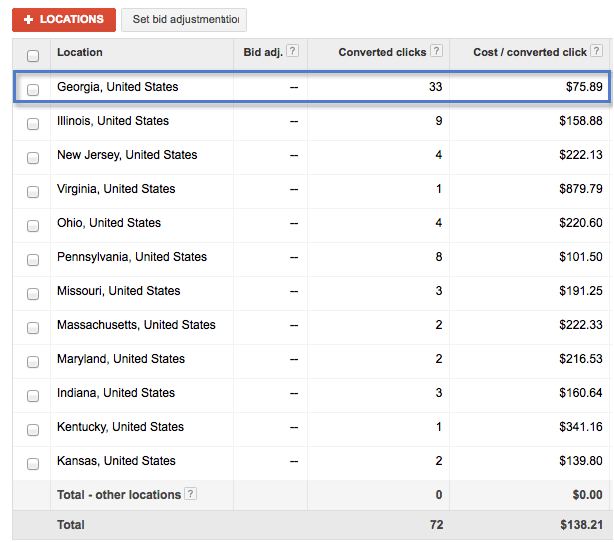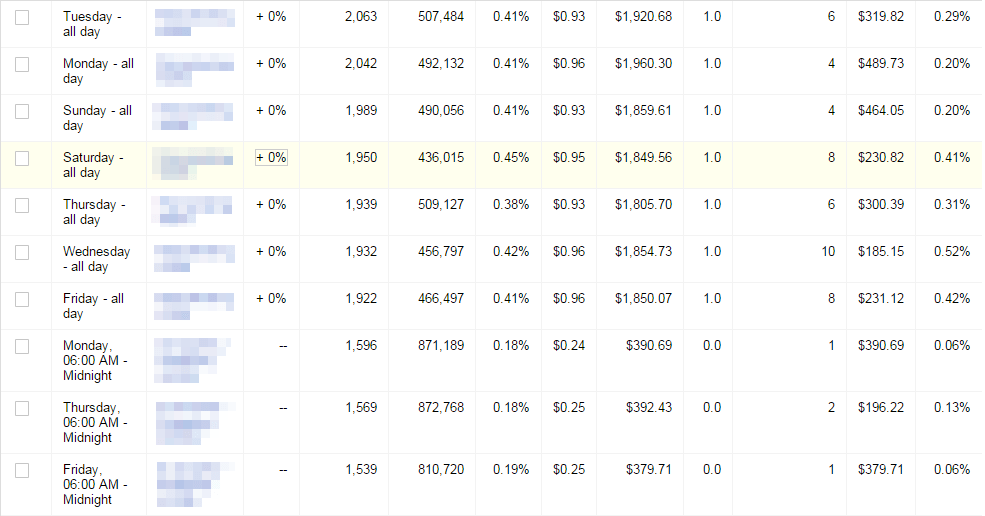[display-name-category]
[post_author]
Worrying about ads and keywords and everything in between can leave you tired and, therefore, tend to make you skip through the  settings of your AdWords campaigns.
settings of your AdWords campaigns.
How hard can it be? You may think. And you are right, setting them up properly is not as time-consuming as the rest. However, even the smallest oversight could have serious negative effects on the campaign you worked so hard to put together.
When it comes to settings, most oversights come from not understanding the meaning and implication of each setting, so here they are nailed down and demystified.
1) Choose a Campaign Type That Fits Your Goals
The type of campaign you want to run is tightly related to your goals as a business and also could affect the way you interact with your other settings. Campaign types are focused on the types of network you wish to target, as of now they are:
-
Search Network Only: Ads will only run in search results in text ad format
-
Display Network Only: Ads will run on the display network only in various formats like text, image, rich media, etc.
-
Search Network with Display Select: Your ads may appear in both the search network and relevant placements within the display network in a combination of ad formats.
However, I will tell you that I don’t recommend using the Search Network with Display Select. My reasoning behind it is this campaign type doesn’t give you enough options to optimize, and you can’t tell what factor is the one performing well or poorly for you.
The best way to go if you are serious about your AdWords campaigns is to create two different campaigns. One for Search and another one for Display and give them both your 100% instead of doing them both halfway at the same time.
Pro tip: There is an array of specialized campaign types you could look into like call-only campaigns if your business is heavily dependent on calls or dynamic search ads for e-commerce stores that use the content of your website to generate tailored ads.
2) Don’t Just Disregard the Search Partner Network
Search partners refer to a list of non-Google websites that your ads have the option to appear in. Advertising on the Search Partner Network can easily become an extra chunk of money and conversions because of the added reach of your ads.
Of course, your business may not benefit from this option. However, I always recommend testing if it works or not before making a decision by carefully examining your metrics. In my experience, businesses that have a lot of traffic and have to work on maximizing it only to include relevant visitors have not benefited from this option before.
3) Target More Than One Language
Let’s face it, we live in a globalized world, and even if you are in the most remote local community, chances are there is some cultural diversity. Therefore, it is always a good idea to target more than one language in your campaigns, in fact, it’s better if you do.
But it’s not just about that. For example, someone in San Francisco can perform a search in English. However, their language settings are in Chinese or Spanish. For this reason, your ad may not have shown to that person, and so on.
So in short, pay attention to your location targeting and add more languages accordingly to take advantage of the extra chunk of a qualified audience you can find.
4) Get as Specific as You Can With Location Targeting
In other words, don’t just type in ‘the United States’ or ‘Iowa’ in your location targeting. Even if you are indeed targeting the whole United States, you could create ad groups for the main cities or states with specific targeting or see data for each state that you are targeting:

My recommendation is that if you are a local business, you should get as specific as it gets. For example, if you have a store in Saint Louis, MO target the zip codes and cities that surround your store.
The reason for this is that you will be able to obtain better data on the cities and zip codes you target. You will be able to see which area converts best and use this information for future optimizations.
5) CPC and CPA Bidding are Based on the Same Factors
CPC and CPA bidding both are bidding options in which you pay for the click to your ad. The only difference with CPA bidding is that Google looks at your historic conversion rate and multiplies it to determine your CPC bid.
The main advantage that you’ll get from CPA bidding is that Google will essentially manage your bids for you. Google will look at each keyword’s conversion rate and change your bid accordingly.
However, never just set and forget your campaign settings and much less the ones that have to do with bidding. For instance, if you set a CPA bidding Google can’t differentiate the dollar amount of your transactions, so you could be getting conversions that are not high in dollar amounts and paying more than you have to for that click.
6) Understand the Difference Between Standard and Accelerated Delivery
With standard delivery, if your budget starts running out before the end of the day, your ads will start showing only after the second or third time someone searches for your keywords thereby protecting your budget from running out.
On the other hand, if you use accelerated delivery, then your ads will show for every time people search for your keywords and use up your budget until it runs out.
It is up to you to decide which options suit you best. However, I must say that I always prefer having the most control possible over my account, and, for this reason, I prefer accelerated delivery.
Pro tip: In case your budget runs out, try reducing CPCs or pausing the non-covertings parts of your account.
7) Use Ad Scheduling
If you don’t open your business on Mondays, why would you have your campaigns running that day? Ad scheduling allows you to adjust your business’s schedule or working times and days to your Google Ads campaign. By doing this, you will ensure that:
-
Schedule your ads to show when you’re present in the business
-
Lower or disable your AdWords campaigns during low-response periods
-
Increase bids for high-converting time frames
-
Schedule your ads to show higher on the weekdays with the greatest Conversion Rate

Get More Tips About Ad Scheduling:
8) Rotate Indefinitely is the Best Way to Optimize Your Ads
One thing that you should always be doing in your AdWords campaigns is testing your ads. The way and frequency your ads are shown could skew the data coming from your ad tests. As of now, there are four rotation settings available in AdWords:
-
Optimize for clicks: the ad with the highest CTR will be given preference before the others
-
Optimize for conversions: the ad with the highest amount of conversions is displayed most often
-
Rotate evenly: the ads should have more or less the same amount of impressions for 90 days, then the highest CTR ad will be displayed the most often
-
Rotate indefinitely: the ads are delivered evenly and are not optimized
I recommend using rotate indefinitely, as Brad Geddes states in his post:
“ For most serious ad testers, you should be using ‘Rotate indefinitely’ as your ad rotation setting. This will ensure that your ads are equally served and that all the ads build up the minimum viable information to make ad testing decisions.”
9) Keyword Matching Options: Should you or Shouldn’t you Include Misspellings?
Let’s face it, we are not all clear cut serious about spelling things right into the Google search bar. For this reason, unless you have a product or service that has guaranteed large amounts of traffic, you should include misspellings, plurals, and other close variants.
Keep in mind that including this option shouldn’t be taken as a set rule. If you think you could benefit from excluding it because you are getting irrelevant traffic, do so. It’s all about testing with AdWords.
10) Exclude Your Own IPs to Avoid Paying for Faul Clicks
An option that many overlooks is excluding the IPs of people in your company of family members to prevent them from clicking on your ads unknowingly when searching your site.
By doing this, you will avoid paying for clicks that won’t result in any business.
Don’t Let Your Settings Stagger
Setting them right the first time won’t do you any good if you ‘set and forget’.
The biggest takeaway from this post is that no matter the strategies you plan to put to use you continue to check up and make changes to your settings as you see fit according to your campaign progress.





